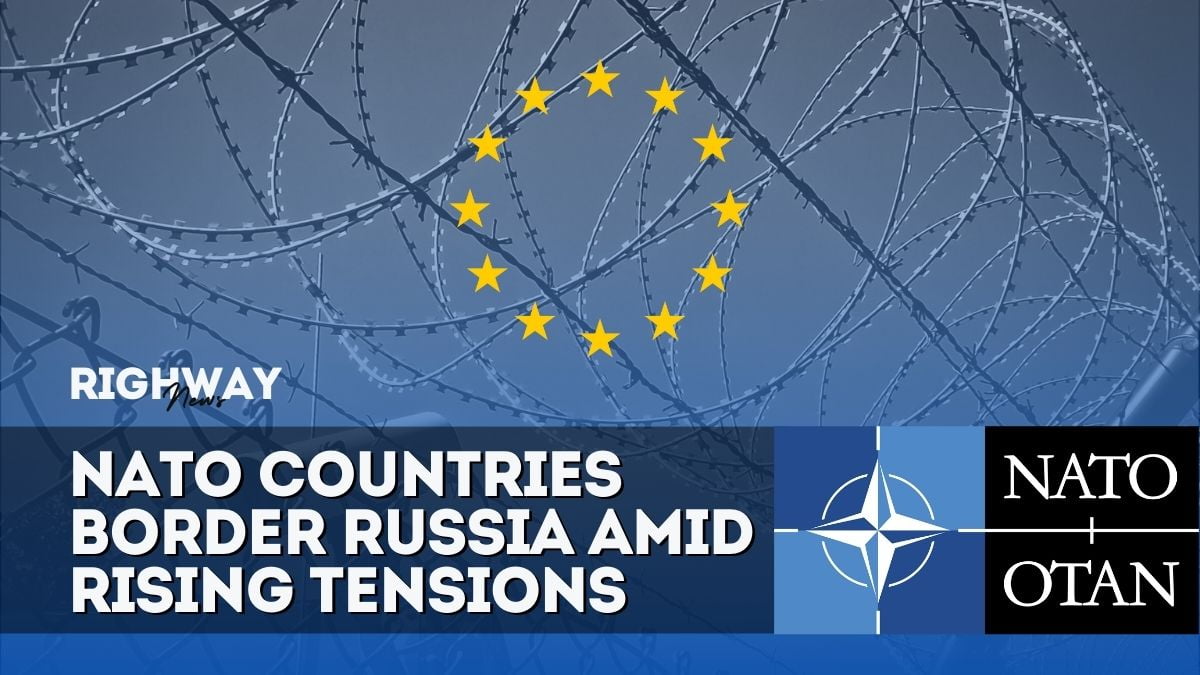NATO Countries Bordering Russia Amid Escalating Tensions
In a significant geopolitical development, the North Atlantic Treaty Organization (NATO) is reinforcing its presence along the borders of Russia. This move comes amidst escalating tensions and growing concerns over regional security.
As NATO countries bordering Russia take center stage, the international community watches closely, anticipating potential ramifications.
NATO’s strategy to bolster its eastern front is a direct response to perceived threats from Russia. The alliance’s efforts include increased military presence, joint exercises, and strategic planning. This move is seen as a deterrent against potential aggression, aimed at reassuring member states situated on the frontlines.
NATO Countries Bordering Russia
Several NATO countries share borders with Russia, each playing a crucial role in the alliance’s defense strategy. These countries include:
- Estonia
- Latvia
- Lithuania
- Poland
- Norway
Estonia, Latvia, and Lithuania: These Baltic states have been at the forefront of NATO defensive measures. Given their proximity to Russia, these nations have experienced heightened security concerns and have welcomed NATO increased presence.
Poland: Serving as a significant buffer between Western Europe and Russia, Poland has been a vocal advocate for stronger NATO defenses. The country hosts several NATO exercises and has seen a substantial increase in allied troops.
Norway: Norway’s northern border with Russia places it in a unique position within NATO. The country has consistently balanced its NATO commitments with a pragmatic approach to its bilateral relationship with Russia.
The NATO-Russia relationship has been fraught with tension since the Cold War. Post-Cold War, NATO expansion eastward has been a contentious issue for Russia, which views it as a strategic encirclement.
The annexation of Crimea in 2014 marked a significant downturn in relations, leading to NATO current stance on deterrence and defense.
Military Deployments and Exercises
NATO increased activity along Russia’s borders includes:
- Enhanced Forward Presence (EFP): Battlegroups in Estonia, Latvia, Lithuania, and Poland.
- Defender-Europe Exercises: Large-scale annual military exercises involving NATO and partner nations.
- Baltic Air Policing: NATO’s mission to protect the airspace over the Baltic states.
These deployments and exercises aim to enhance readiness, and interoperability, and demonstrate NATO commitment to collective defense.
Political Reactions and Statements
The geopolitical chess game has prompted a series of reactions from various stakeholders:
- NATO Leaders: Emphasizing the need for unity and collective defense, NATO leaders have reiterated their commitment to protecting member states.
- Russian Officials: Accusing NATO of aggressive posturing, Russian officials have warned of reciprocal measures.
- International Observers: Mixed reactions ranging from support for NATO defensive measures to calls for de-escalation and dialogue.
Potential Impacts on Global Security
The bolstering of NATO eastern flank has several potential implications:
- Regional Stability: The presence of NATO troops may deter aggression but also risks provoking a response from Russia.
- Global Alliances: Strengthening NATO eastern borders could influence other global alliances, potentially leading to new security pacts.
- Economic Consequences: Heightened tensions could impact trade and energy supplies, particularly in Europe.
Experts are divided on the best course of action. Some advocate for continued NATO presence to ensure security, while others call for diplomatic efforts to reduce tensions. The consensus is that a balanced approach, combining defense with dialogue, is essential to navigate the complexities of the situation.
The reinforcement of NATO borders with Russia marks a critical juncture in international relations. As the alliance balances deterrence with diplomacy, the world watches closely. The path forward will require careful navigation, with the hope that stability and peace can prevail over conflict.
Why is NATO increasing its presence near Russia?
NATO aims to deter potential aggression and reassure member states bordering Russia amid rising tensions.
Which NATO countries share a border with Russia?
Estonia, Latvia, Lithuania, Poland, and Norway share borders with Russia.
How has Russia reacted to NATO moves?
Russia has accused NATO of aggressive posturing and warned of reciprocal measures.
What are the potential global impacts of these tensions?
Increased tensions could affect regional stability, global alliances, and economic conditions, particularly in Europe.
What is the historical context of NATO-Russia relations?
The relationship has been tense since the Cold War, with significant downturns such as the annexation of Crimea in 2014.
In summary, as NATO countries that border Russia find themselves at the heart of a complex geopolitical situation, the actions taken by both NATO and Russia will be pivotal in shaping the future of regional and global security.
Have questions or need more information? Feel free to reach out to us through our Contact Page. You can also learn more about our mission and team on our About Page.
Stay connected with RIGHWAY on social media. Follow us on Facebook, Twitter/X, and Instagram for the latest news updates, behind-the-scenes content, and more. Engage with us online and be a part of our growing community.
Sign up for our newsletter to get the latest news delivered straight to your inbox. Follow us on social media for real-time updates and engaging content.
Stay connected with RighWay, where your news journey begins.
More like this Top News
- Surviving the COVID Summer Wave: Top Tips to Stay Safe
- Top 10 Peloton Instructors Who Will Transform Your Workout Routine
- What is Bird Flu Pandemic?
- How to Treat Bee Sting Pain: Effective Remedies and Tips
- Lung Cancer: Can It Truly Be Cured?
- Types of Pregnancy Tests
- Types and Categories of Heart Health Supplements
- Where is Uefa Euro 2024?
- Apple Intelligence: Transforming Tech | Latest Updates
- What Tony Awards Did Hamilton Win?
- What Will Tesla Stock Be Worth in 2025?

